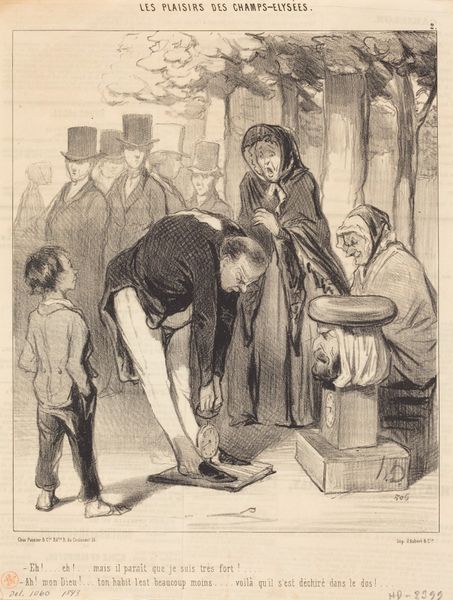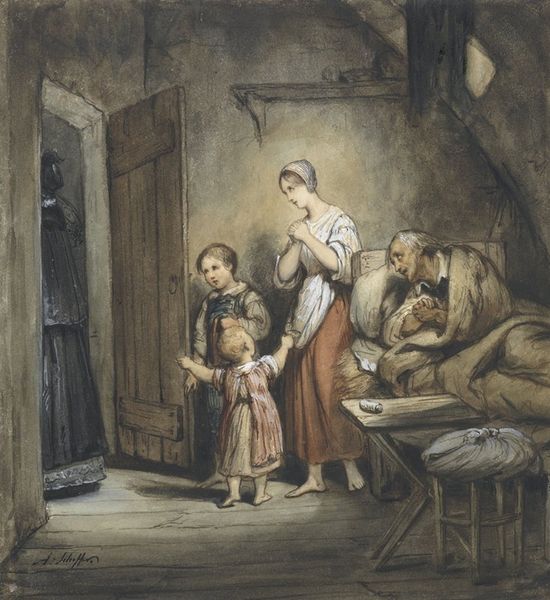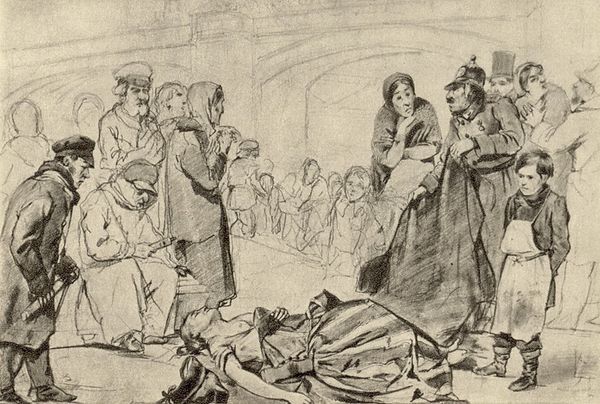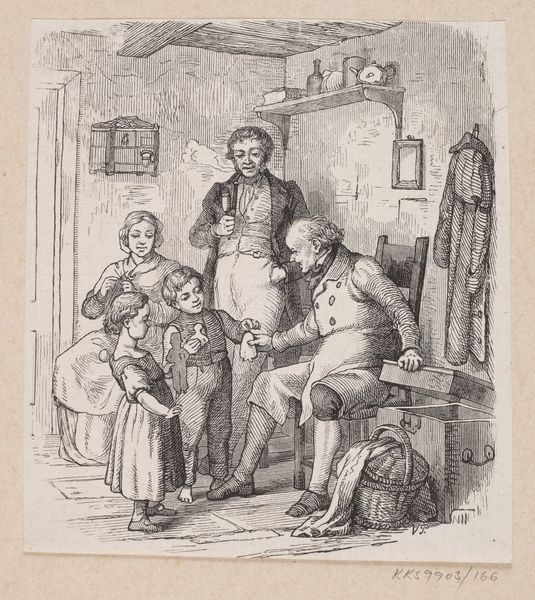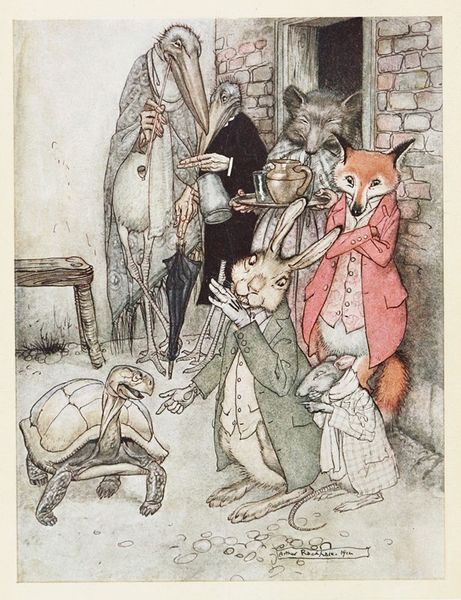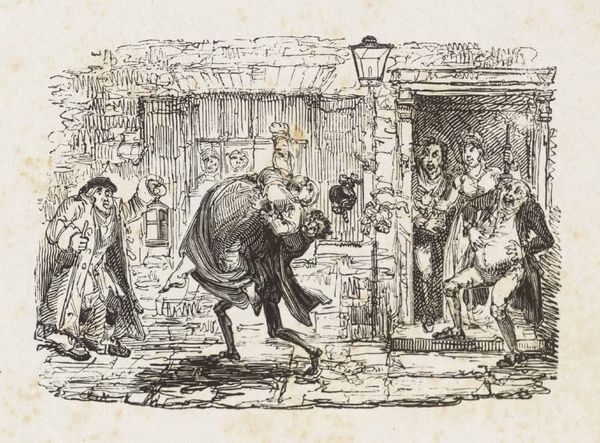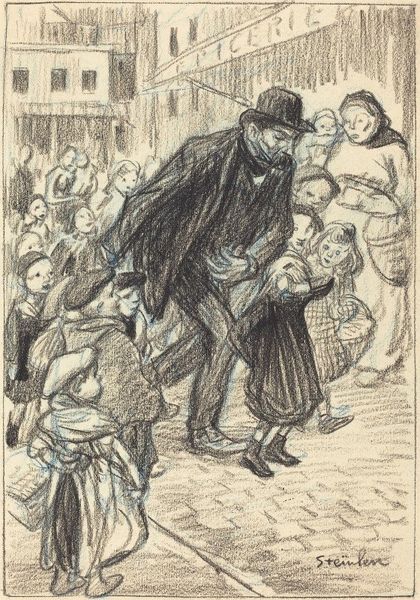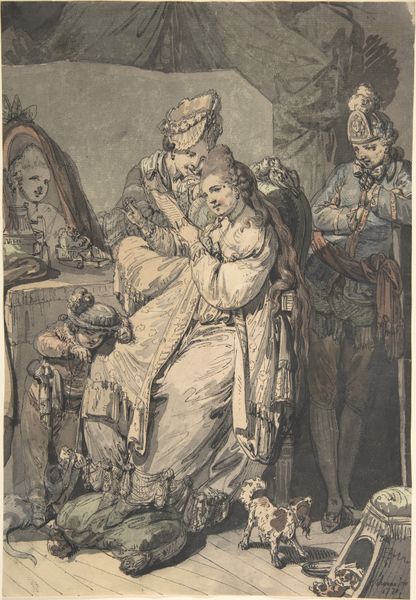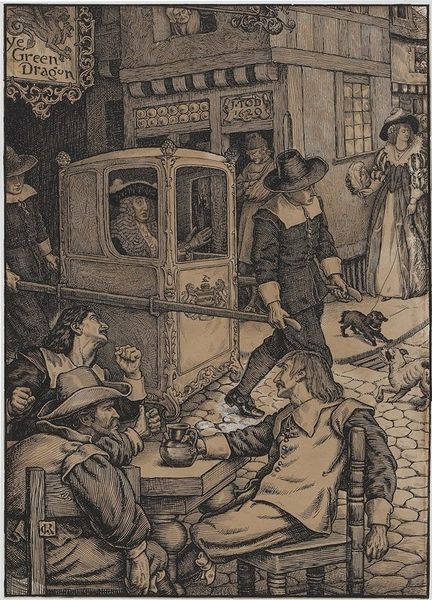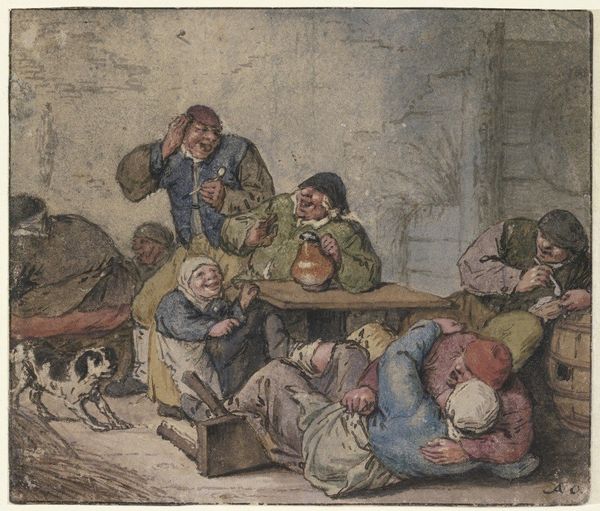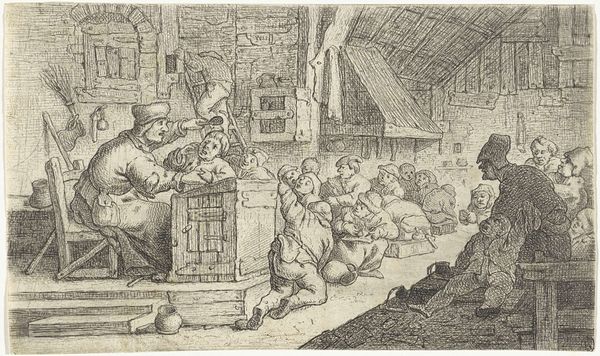
Copyright: Public Domain: Artvee
Editor: Arthur Rackham’s “Poor Cecco Goes into Business”, created in 1925, rendered in watercolor…it’s quite detailed. The composition draws me in, especially the contrast between the crowd and the solitary figure of the blind man. How should we interpret its context? Curator: Rackham's work often taps into folklore and social commentary, so consider the role of public spectacle here. This piece depicts a blind man with his props surrounded by onlookers. How does the public's gaze, literally their currency, both support and potentially exploit his vulnerability? Editor: I see what you mean. It’s almost like he’s putting on a performance, but is that performance out of choice or necessity? Does Rackham's illustration pass judgement on society's attitude toward the less fortunate, especially in the post-war period? Curator: Precisely! The period matters. 1925 was a time of rebuilding after WWI, but there was unequal progress. Rackham presents us with the man’s ‘business’ being reliant on societal structures that may have simultaneously marginalized him. The act of viewing becomes an ethical issue: is their looking charitable, or mere entertainment? And the children... what about their roles in this staged encounter? Editor: That’s a perspective I hadn't considered before. The children offer him coins but are perhaps unaware of the broader socio-economic forces at play. Curator: Exactly. By understanding these layers, we appreciate how Rackham’s work is less about a simple illustration, and more of an investigation of social power, spectatorship, and perhaps, even pity. It's art prompting critical engagement. Editor: I never would have guessed it could be such a powerful statement just by looking at the whimsy on the surface! Thank you. Curator: It is my pleasure to illuminate these ideas for you.
Comments
No comments
Be the first to comment and join the conversation on the ultimate creative platform.
